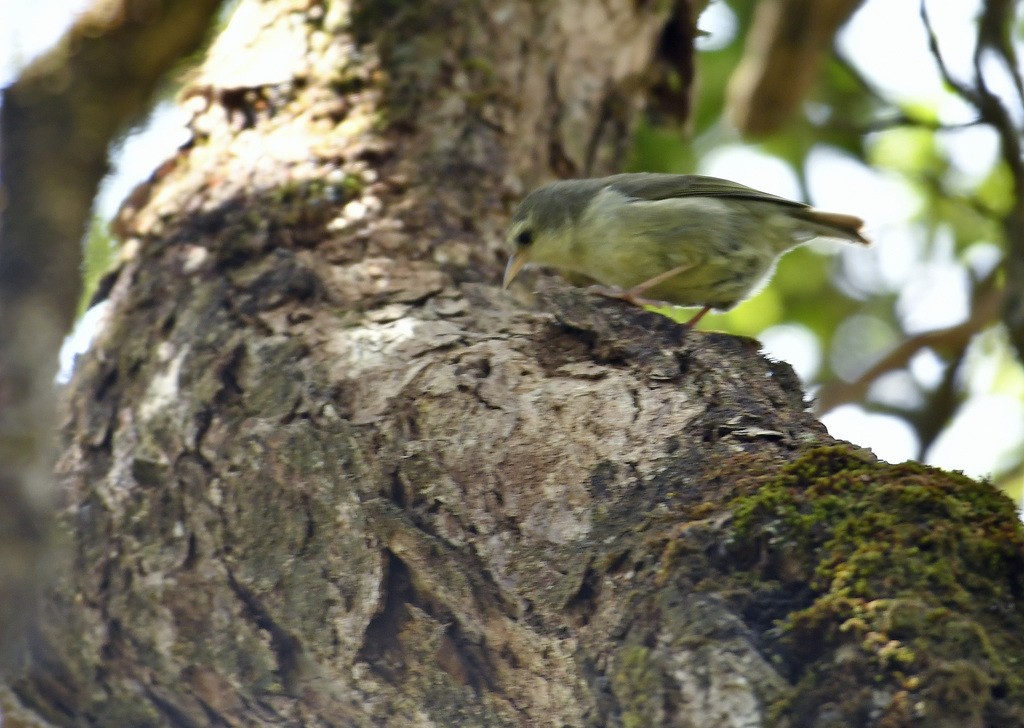Akikiki
A species of Akikiki Scientific name : Oreomystis bairdi Genus : Akikiki
Akikiki, A species of Akikiki
Botanical name: Oreomystis bairdi
Genus: Akikiki
Content
Description General Info
 Photo By hdmiller , used under CC-BY-NC-4.0 /Cropped and compressed from original
Photo By hdmiller , used under CC-BY-NC-4.0 /Cropped and compressed from original Description
The ʻakikiki is small (13 cm length; 12-17 g mass), with gray plumage above and white below. It is not sexually dimorphic. Juveniles have large white eye rings; adults may retain a pale eyebrow for several years. Legs and bill are pink. The tail is short compared to other birds on Kauaʻi, giving it a stocky appearance. 
Size
13 - 23 cm
Nest Placement
Shrub
Feeding Habits
Akikiki consumes a varied diet including insects, their larvae, spiders, and fruits. Akikiki actively forages for prey, demonstrating specialized feeding techniques adapted to its environment. Its diet distinguishes it through a preference for certain invertebrates and fruits.
Habitat
The akikiki inhabits mesic to wet montane forests, primarily thriving in areas with 'öhi'a tree canopies. These regions are characterized by a diverse understory of native shrubs and trees, and a forest floor teeming with ferns, mosses, herbs, and lichens. The bird’s habitat spans environments with annual rainfall between 1,100 to 13,000 mm, indicating a preference for moisture-rich ecosystems.
Dite type
Granivorous
General Info
Feeding Habits
Bird food type
Behavior
Distribution Area
It is currently found only in the highest elevation native rainforests of Kokeʻe State Park and the Alakaʻi Wilderness Preserve on Kauaʻi. Subfossil records indicate that it was once found at sea level as well, and thus may have inhabited a wider range of habitats, including dry forest. 
Species Status
The ʻakikiki has been listed as critically endangered on the IUCN Red List since 2000. It has been a candidate for listing as an endangered species under the Endangered Species Act since 1993, but was not listed as such until 2010. Because little is known about this species, the primary focus of recovery efforts so far have been estimating the population size and understanding its basic biology. Captive breeding, reintroduction, and habitat restoration are planned. On May 2015, a high-school teacher in Tamil Nadu, India by the name Prakash Vaithyanathan suggested International Astronomical Union to name a celestial body as Akikiki during the occasion of the 2015 IAU General Assembly conducted in Hawaii. After much consideration, asteroid number 7613 was officially named 7613 ʻAkikiki. 